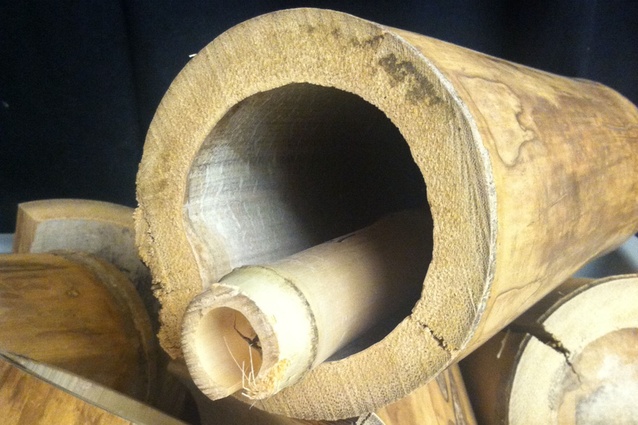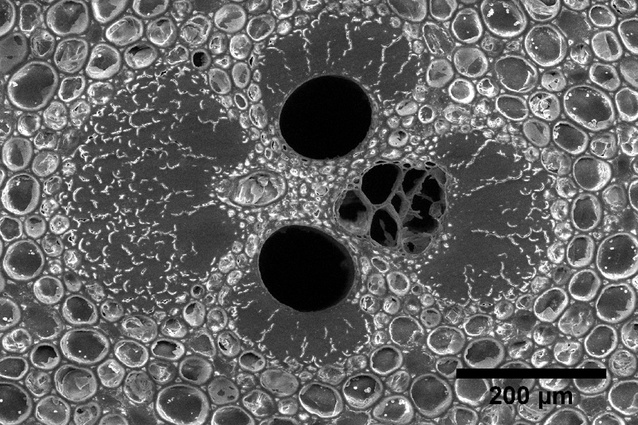Engineered bamboo
Reserchers from the Massachusetts Institute of Technology (MIT), along with architects and wood developers from England and Canada, are looking for ways to turn bamboo into a construction material more akin to wood composites like plywood.
The idea is that a stalk, or culm, can be sliced into smaller pieces, which can then be bonded together to form sturdy blocks — much like conventional wood composites. A structural product of this sort could be used to construct more resilient buildings — particularly in places like China, India, and Brazil, where bamboo is abundant.
While these sorts of products are currently being developed by several companies, the MIT project aims to gain a better understanding of the material so bamboo can be used more effectively structurally.
The MIT researchers have analysed the microstructure of bamboo and found that the plant is stronger and denser than North American softwoods like pine, fir, and spruce, making the grass a promising resource for composite materials.
“Bamboo grows extensively in regions where there are rapidly developing economies, so it’s an alternative building material to concrete and steel,” MIT professor of materials science and engineering Lorna Gibson said. “You probably wouldn’t make a skyscraper out of bamboo, but certainly smaller structures like houses and low-rise buildings.”
Gibson and her colleagues analysed sections of bamboo from the inside out, measuring the stiffness of each section at the microscale. As it turns out, bamboo is densest near its outer walls. The researchers used their data to develop a model that predicts the strength of a given section of bamboo.
The model may help wood processors determine how to assemble a particular bamboo product. As Gibson explains it, one section of bamboo may be more suitable for a given product than another: “If you wanted a bamboo beam that bends, maybe you’d want to put the denser material at the top and bottom and the less dense bits toward the middle, as the stresses in the beam are larger at the top and bottom and smaller in the middle. We’re looking at how we might optimise the selection of bamboo materials in the structure that you make.
“One of the impressive things is how fast bamboo grows. If you planted a pine forest versus a bamboo forest, you would find you can grow far more bamboo, and faster.”











